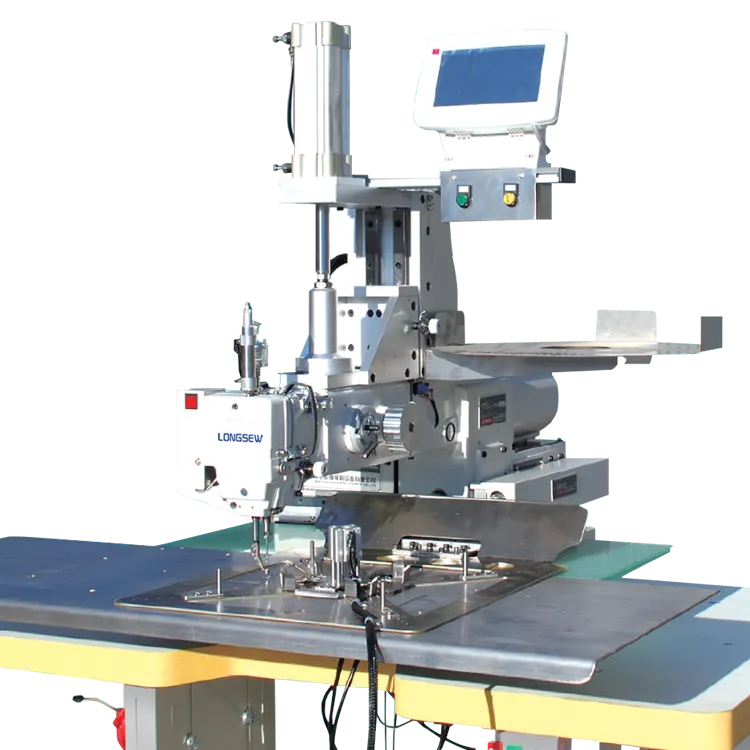Understanding the Functionality and Benefits of a Lockstitch Sewing Machine for Seamstressing
Understanding Lockstitch Sewing Machines
Lockstitch sewing machines are a vital component of the textile industry, offering precise stitching and versatility that cater to a variety of sewing needs. In this article, we will delve into what a lockstitch sewing machine is, how it functions, and its applications in both home sewing and industrial settings.
At its core, a lockstitch sewing machine creates a stitch by interlocking two threads—one from the needle and another from the bobbin—inside the fabric. This design contrasts with other stitch types, such as chain stitches, which utilize a single thread. The lockstitch mechanism forms a durable and tight seam, making it ideal for many sewing applications.
How It Works
The operation of a lockstitch sewing machine involves several key components. The most critical parts include the needle, bobbin, feed dog, and presser foot. When the needle pierces the fabric, it carries the upper thread through, while the bobbin thread is drawn up from the bobbin case below. As the needle rises, it pulls the bobbin thread through the loop created by the upper thread, effectively locking the two threads together.
The feed dog, which moves the fabric forward, works in conjunction with the presser foot to keep the material steady while sewing. The combination of these components allows the machine to create a consistent and uniform stitch pattern, which is essential for both aesthetic and functional purposes.
Types of Lockstitch Machines
what is a lockstitch sewing machine

There are two main types of lockstitch sewing machines domestic and industrial. Domestic lockstitch machines are typically smaller, portable, and designed for home use. These machines often come with various stitch options, allowing users to experiment with different techniques such as zigzag stitching, buttonholes, and decorative patterns.
On the other hand, industrial lockstitch machines are built for high-volume production and durability. They usually feature a robust frame, faster sewing speeds, and are capable of stitching through multiple layers of heavy materials. Industrial machines are often used in clothing manufacturing, upholstery, and other applications where speed and strength are required.
Applications
Lockstitch sewing machines are widely used in the fashion industry, where precise stitching is vital for garment construction. From basic seams to intricate detailing, these machines handle various fabrics, including cotton, denim, and synthetic materials. They are also employed in quilting, home decor, and crafts, making them an essential tool for hobbyists and professional sewists alike.
In addition to traditional sewing, lockstitch machines have evolved to include computerized models that can store patterns and automate processes, further enhancing their usefulness. These advancements have made lockstitch machines not only easier to use but also more efficient for complex projects.
Conclusion
The lockstitch sewing machine is an essential tool in both personal and professional sewing endeavors. Its ability to create strong, tight seams makes it a favorite among sewists worldwide. Understanding the mechanics and applications of a lockstitch sewing machine opens up a world of creative possibilities, whether you are making a simple garment or embarking on a more complex sewing project. As technology advances, these machines will continue to play a crucial role in the ever-evolving landscape of textile production.
-
Industrial Cylinder Arm Sewing Machine: Revolutionizing Heavy-Duty SewingNewsJul.28,2025
-
Cylinder Arm Sewing Machine: Perfect for Special Sewing ApplicationsNewsJul.28,2025
-
Cylinder Bed Sewing Machine: Essential for Sewing Complex MaterialsNewsJul.28,2025
-
Heavy Duty Sewing Machine: The Essential Tool for Industrial ApplicationsNewsJul.28,2025
-
Computerized Pattern Sewing Machine: Revolutionizing Precision StitchingNewsJul.28,2025
-
Heavy Duty Industrial Sewing Machine: Power Meets PrecisionNewsJul.28,2025
-
Leather Sewing Machine: The Industrial Standard for Tough MaterialsNewsJul.18,2025





























